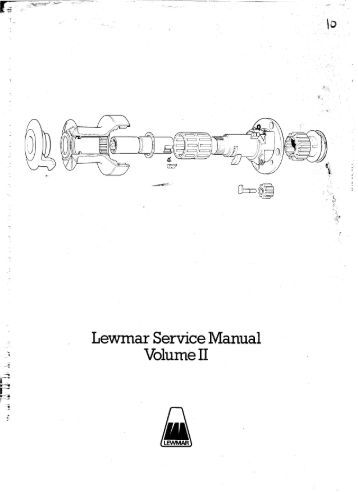Goiot Windlass Maintenance Manual
Reply from cristi-obd2: From cristi-obd2 To aspire1710, Today at 1:49 am Hi, Hope you are doing well. Esi tronic 2013 2q keygen.

Items 1 - 12 of 108 - Goiot. Windlass & Anchoring Know-How. Horizontal Vs Vertical Windlass? Obsolete Windlass Information. Refine Results Spares Section. Manual recovery (8). I'm trying to remove the gypsy off my Goiot Windlass. It from 1999. I'm trying to put new chain on my boat, but good luck getting metric chain in the US. Not even Sailorman.
If you have an electric windlass, eventually you will step on the foot switch, or flip the switch in the cockpit, and nothing will happen. Of course this can be caused by many problems, but the most common are corroded contacts on a solenoid. In a blog post a while back I discussed solenoids in general terms. If you don’t know what a solenoid is, or what it does, it would do you well to read this brief primer.
Here we’ll discuss windlass solenoids, or what they call a windlass control box, which is really just two solenoids in the same box and sharing some of the same circuitry. If your windlass just powers in one direction (up!) then your windlass control solenoid will be a simple one like this:
…or this:
…But if your windlass has both power up and power down, it’ll look something like this:
…or this:
…or this:
Hey, wait a minute, those last two look exactly alike. Yes, many windlass control boxes are made in Italy by the same manufacturer, and other companies brand them as their own. We must stop this evil Italian monopoly on windlass control solenoids!…or just address one problem at a time, like a windlass that won’t work.
Dkz studio english download. Most windlasses are switched through a solenoid, like those ones pictured above, but some are switched directly through a high-amperage foot switch, with no solenoid between the foot switch and the windlass. In both cases, the problem and solution are the same: The solenoid in the control box, or your foot, presses a large copper bar against two contacts. Since this is a high amperage connection, this copper bar can spark, arc, and take a lot of abuse. Over time, the points of contact will become fouled, “carboned up,” as they say, and will no longer make good electrical contact.
There will usually be some warning: You’ll go to raise your anchor and the windlass won’t work. You’ll try a few times and it will work, then you’ll forget it didn’t work the first time, but the first time should serve as a warning that troubles are on the way.
The telltale sign is the solenoid clicking, or stomping on that foot switch, but the windlass still not working.
The solution is simple – clean the electrical contacts – but of course it’s seldom that simple. If yours is a solid state solenoid, as in many up-only installations, you simply can’t get at the contacts and the solenoid must be replaced (about $50). If you’ve got one of the Italian jobs, or one of their American (meaning Chinese) equivalents, you can get to the contacts and clean them.
During my ten-year circumnavigation this was an annual task, heralded by the aforementioned warnings.
Usually you’ll have to completely remove the control box and disconnect all wires. Note where everything goes: digital cameras and smart phones are great for this. Once you’ve got everything disconnected you can confirm your diagnosis by touching the power cable directly to the power lead(s) on the windlass. If it jumps to life, you’ll know your solenoid/control box is indeed the problem. If it doesn’t jump to life, your problem lies somewhere else.
Car Maintenance Manual
Remove the screws that hold the lid on the the control box:
Inside, you will see something like this:
On both sides, down in the box, are the solenoids. Above are the contacts, the filthy, fouled contacts, which must be cleaned. But to clean the contacts you must loosen and remove the studs from the top of the control box:
Once everything is out and exposed, go to it with a wire brush. Don’t be shy: The fouling on the contacts can be tenacious, and require vigorous action with a wire brush or sandpaper. The copper contacts will probably be zinc plated, but the zinc may have to go bye-bye to make clean electrical connections again. This isn’t rocket science: It’s brute physical/electrical stuff, where copper bars have to come into contact with copper studs like a punch in the face:
Once the contacts are clean, reassemble the control box, reconnect the wires, and you should be up and running again. Yes, there are many other things that can go wrong electrically with a windlass, but in my experience it was this about ten times in a row, followed by something more serious (I’ll get to this later).
Most importantly, a new windlass control box will cost $150-$180 retail. Forty-five minutes in the most uncomfortable position imaginable in your anchor locker to deal with a faulty windlass control box…priceless.
Lewmar Windlass Maintenance
This article was syndicated from The Adventures of the Vessel Condesa Laura veirs july flame.